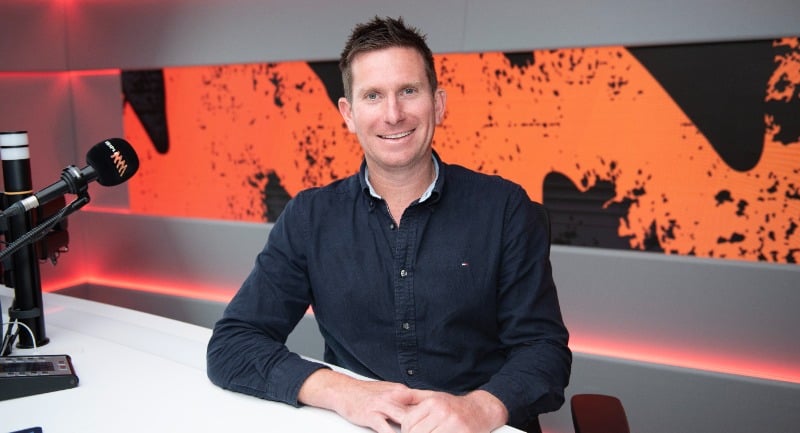Jaspan references a news consumption from the University of Canberra and Reuters that found Australians are increasingly turning to platforms like TikTok for their news. He then cites a YouGov poll that found 57 per cent of respondents say online influencers are a leading concern when it comes to misinformation.
Friday July 4, 2025
“Mushroom lady” Erin Patterson the focus of new ABC TV drama ‘Toxic’
While Australia continues to wait for the jury to come back with a verdict in the murder trial of Erin Patterson, the ABC is working on a TV drama about the Melbourne woman accused of murdering her guests with poisoned mushrooms.
ABC drama Toxic is described as as “intricate series that explores the events and characters of this true-life story without judgement.” The show is created by Elise McCredie (Jack Irish) and Tony Ayres (The Survivors), with support from ABC journalist and podcaster Rachael Brown.
Tony Ayres Productions, which is backed by Matchbox Pictures and Universal International Studios, will develop the series for the ABC.
About the new series, Ayres said: “True stories ask storytellers to probe the complexities of human behaviour. What really lies beneath the headlines? It’s both a challenge and a responsibility to go beyond the surface – to reveal, not just sensationalise.”
McCredie added that it is a “tangled, heart-breaking story” and that “Sitting in on the trial, watching evidence unfurl, change direction, and reposition itself has been an exercise in the subjectivity of ‘truth’ and a blueprint for a dramatic retelling that explores multiple perspectives in an honest and compelling way.”
Rachel Okine, Head of Scripted, ABC commented: “We’re excited to be partnering once again with our long-time collaborators, Tony Ayres Productions, on this powerful new project. This investigation has already captivated audiences across Australia and we’re eager to dive deeper into the complexities behind the headlines to bring this story to life with the team”.
There is no suggestion of who will be cast in the show just yet.
Toxic will be the first scripted drama to focus on the event, however Australian streamer Stan has announced a quick turnaround documentary series titled Death Cap. Stan’s synopsis for the series: “With exclusive access into the trial of Erin Patterson, the documentary series Death Cap explores how one tragic lunch has the means to shatter a small-town community, while examining the fairness of a trial amidst a global media frenzy.”
A small industry of widely-listened to audio podcasts has built up in recent months, feeding Australia’s obsession with the Patterson story. The ABC has its own Mushroom Case Daily podcast, hosted by ABC court reporter Kristian Silva and ABC producer- journalist Stephen Stockwell.
News Corp Australia’s The Mushroom Cook podcast host, Brooke Grebert-Craig, recently spoke with Mediaweek about the interest in the case, reporting that at the courthouse “people are arriving at 6am to line up, even though the doors don’t open until 9am.” This level of interest is impressive considering, as Grebert-Craig says: “They’re waiting up to three hours in the cold. And it is cold in Victoria right now, freezing, actually, like five degrees in the morning.”
Since launching, The Mushroom Cook podcast has seen 2.3 million downloads in Australia, 450,000 in the UK, 240,000 in New Zealand, and 135,000 in the US.
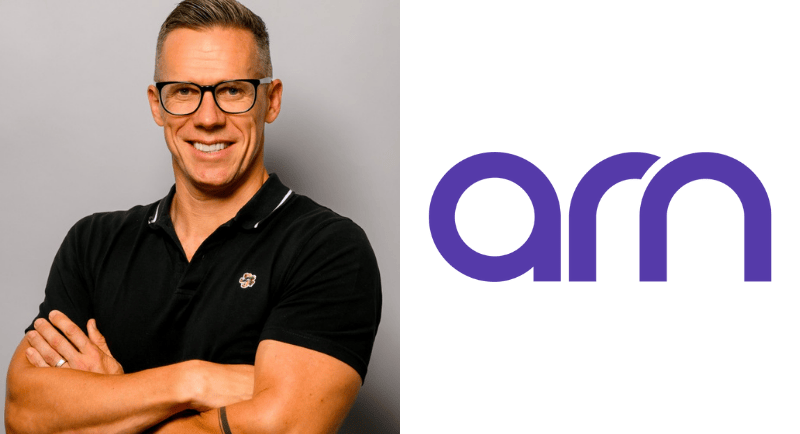
Emotive CEO says ‘there’s nothing holding it back’ after ARN sells shares
Emotive CEO Simon Joyce called ARN “the best partnership” after it sold majority of its shares in the creative agency.
Speaking of Emotive’s future, he told Mediaweek: “We’re fully autonomous, there is nothing holding it back – not that ARN was really holding us back.”
Joyce also took to LinkedIn on Thursday to mark milestone moment and recalled pitching to ARN and Ciaran Davis, CEO and managing director, about buying a in the creative agency, which he said: “at the time was nothing more than a business plan wrapped in big belief.”
“It was non-synergistic, high-risk, and almost unheard of…a media company investing in a creative agency. But they backed me and our vision to operate independently from day one.”
Over a decade of changes and challenges of the industry, Emotive has grown from strength to strength, with over 20 blue-chip brand partners and a plethora exciting creative work.
Mediaweek: How did having ARN as an early investor shape Emotive’s growth in the early years?
Simon Joyce: They were incredible because we wanted to launch with a bit of scale.
It couldn’t just be me pounding the pavement and it allowed us to launch with a team of six and create momentum and have client discussions at the highest level, knowing that you had the team to immediately play ball should you partner with that particular client.
They gave us that initial funding injection to launch with a bit more scale than perhaps you usually would in a startup creative agency.
MW: Having [Ciaran] Davis on the board must have been great to have his backing?
SJ: He’s been so good because it’s a non-synergistic investment, as you can see, a media partner investing in a creative agency startup.
But he’s just been a great strategic support, but he also understood that we needed to run independently given the business that we needed to carve out, and he was very supportive of that the whole time.
MW: What does ARN sale mean for Emotive going forward?
SJ: This is probably the exclamation mark on it.
We’re really well structured at the moment and everything we do now, we can have a longer-term lens. We’re fully autonomous, there is nothing holding it back – not that ARN was really holding us back.
We can have a longer-term view on how we run the business and the decisions we make.
That’s all been unveiled in what I put out there a couple of weeks ago from the new brand identity to what we’ve done with our fame thinking offering to the AI specialist unit, how we take them retainer models.
All of those elements ladder back to this is. This is one of those points to further unlock the agency and ensure we’re attracting the best talent.
MW: Now as a fully independent agency, what can the industry expect next from Emotive?
SJ: Lots.
We’ve got some new client announcements coming up, big new work that’s got a really different shape in how the ideas come to life.
We’ve got the research play that we’re launching. Our purpose ideas change how people feel or how we’re proving that the change that our work has created, which I put in that release a couple of weeks ago.
Those are some of the big headlines for now.
Final words on the partnership:
SJ: It’s been the best partnership. I can’t get over how fortunate I’ve been. The non-synergistic aspect really helped because it’s allowed us to run it independently and carve out our own way, and the proofs in the success of the agency.
That feels like pretty irrefutable given the momentum we have as a business and everything we’ve achieved over the last 10 years.
Mediaweek has reached out to ARN for comment.
Evolving Emotive
Emotive recently launched its new identity at to create ideas that change how people feel.
Created entirely in-house and designed to reflect the ambition of the agency, Dan Mortensen, Head of Design, said: “We always push our clients to make bold, unmissable work, so our aim was to create a design language that reflects that.”
“We wanted to move past the expected and create something that really moves you on a sensory level. Whether it’s motion, colour, type or sound, every element was crafted with the goal of making people feel something. Just like the work we aim to put into the world.”
The brand identity is underpinned by five evolutions across agency:
1) Emotive’s Fame Thinking model with the hires of Jessica Cluff, Head of Earned and Michelle Lomas, Head of Partnerships. The structured approach combines strategy, creative, design, and earned with social, talent, PR, partnerships, and brand experience, designed to unlock the emotional impact of every idea.
2) The agency’s new advisory team and appointments of Sarah Scott Paul as Director of People and Culture, who brings a focus on mentorship, wellbeing, and growth pathways for the Emotive team.
3) Emotive has introduce a flexible retainer model to allow brands to shift its budget as budget as requirements and priorities change. The model also includes performance-based incentives that tiess agency earnings to results.
4) The launch of the specialist AI headed up by Hayley-Ritz Pelling, Head of Production, and Paul Sharp, Creative Director, which uses AI from brief to final delivery of a project. The AI unit aims to accelerate productivity, boost creativity and streamline processes, and train its team up on how to use it.
5) Emotive also has a new measuring system in the works aimed at understanding how people feel. It is aimed at shaping creative ideas, how well they work and likely emotional responses.
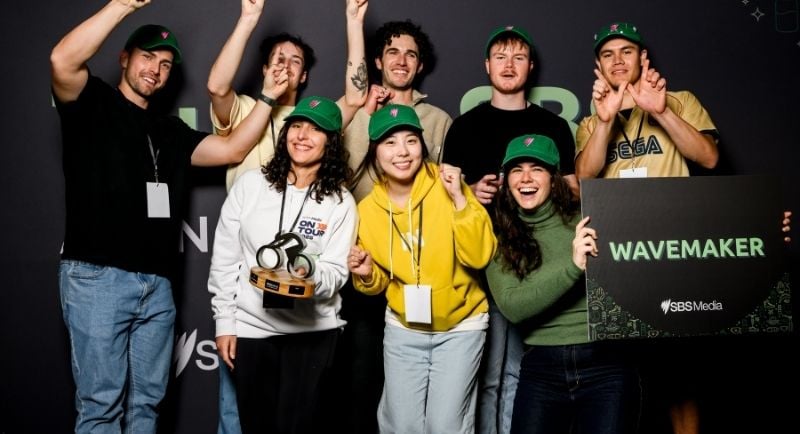
Winner crowned in 2025 Tour de SBS Agency Challenge
Wavemaker beat 19 teams to take the top spot in the 2025 Tour de SBS Agency Challenge.
The broadcaster‘s event, now in its 11th year, drew in 150 people from Sydney’s top media agencies at Hoops Capital East, Moore Park on Thursday.
The WPP Media agency secured the trophy as it dominated the three challenge stations based on SBS content and events.
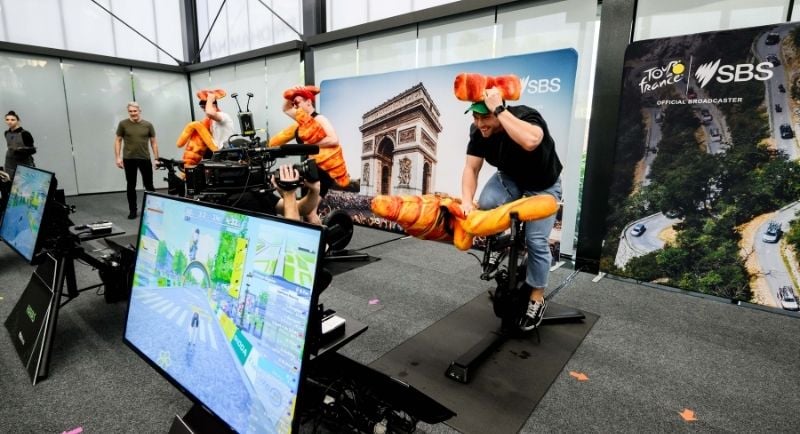
One of the challenges saw participants ride on a stationary bike through a VR route based on the real race using indoor cycling software from Zwift.

The Alone Australia challenge saw participants complete survival-themed tasks in a wind-simulated arena.
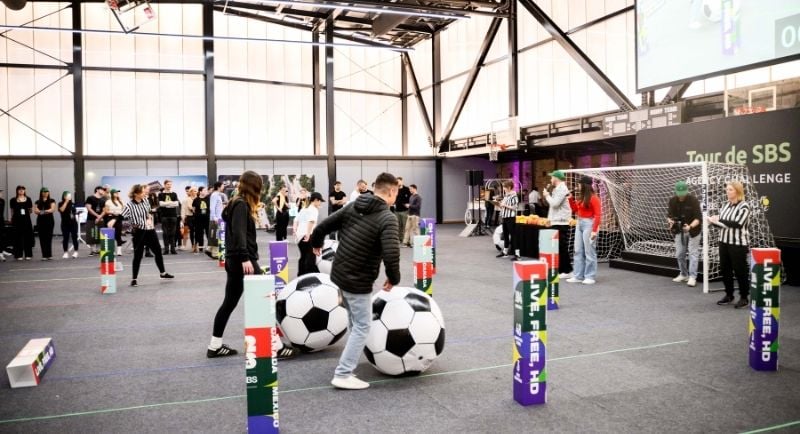
Contestants had to zig zag a giant inflatable soccer ball through a course and finish with a big kick at the goal posts in the FIFA World Cup challenge.
Agency teams took part in the Tour de France challenge, which saw participants ride a stationary bike through a VR route based on the real race using indoor cycling software from Zwift.
That was followed by the Alone Australia challenge that saw participants complete survival-themed tasks in a wind-simulated arena.
Rounding out the event was FIFA World Cup challenge, where contestants had to zig zag a giant inflatable soccer ball through a course and finish with a big kick at the goal posts.
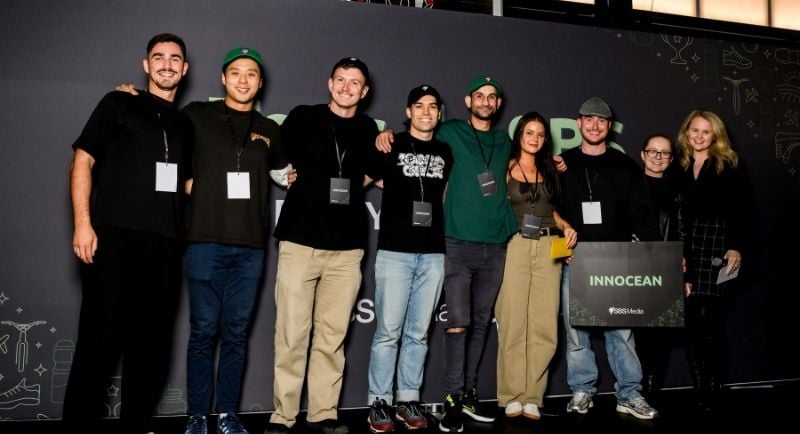
Innocean took second place
Omnicom’s Hearts & Science rounded out the top three.

Pearman Media took the title of best dressed for their creative T-shirts.
Wavemaker, won first place, followed by Innocean in second, and Hearts & Science in third. Pearman Media won best dressed for their creative T-shirt costumes.
Last year, EssenceMediacom was crowned the winner of the Tour de SBS agency challenge, besting PHD and Hearts & Science.
SBS’s broadcast of the Tour de France kicks off this Saturday July 5, live, free and exclusive on SBS and SBS On Demand.
Top image: Wavemaker
Seven signal returns to WIN Network in Riverland, Griffith, and Mount Gambier
The Seven Network and WIN Network have agreed to a new content deal, ending the blackout that saw Seven channels go off the air in the Riverland, Griffith, and Mount Gambier via free-to-air aerial transmission.
At 5pm today, Seven’s programming resumed in these areas.
The blackout was in effect from Tuesday 1 July, prompting criticism from local viewers and politicians.
Federal Barker MP Tony Pasin, who represents locals in the Mount Gambier region, gathered more than 1,700 signatures on an online petition calling on Seven West Media to continue its contractual agreement with WIN TV.
Nationals senator Bridget McKenzie called for stronger intervention: “This is our cultural practice, particularly in the regions – it’s our bread-and-butter,” she said. “These are commercial entities having to make commercial decisions because the environment they’re operating in isn’t financially sustainable.”
Local audiences could continue to access Seven’s multichannels through the online 7Plus streaming service, but broadcast transmission continues to be the dominant way that the channels are viewed.
“The Seven Network and WIN Network have reached a new content agreement which has seen Seven’s channels return to the Riverland, Griffith and Mount Gambier via aerial transmission this afternoon,” the networks said in a joint statement.
“Both Seven and WIN acknowledge the significant impact of free-to-air television in regional communities and the importance of providing news, sport, entertainment, and a voice to regional Australians.
“We thank the people of the Riverland, Mount Gambier, and Griffith communities for their patience while we worked through this matter.”

The Project’s Georgie Tunny joins 10 News+
Network 10 is today announced the addition of journalist Georgie Tunny to evening current affairs program 10 News+. 10 reports that she will bring her passion for sport, news, and storytelling to the show.
Tunny is best known to 10 audiences as a host on The Project, but has a background across ABC, Flash, Fox Sports, and national radio.
10 News+ launched on Monday this week, airing Friday to Sunday at 6pm on 10. The sales pitch for the show is that it offers a different take on the news from what other networks are offering, with 10 billing it as “premium, in-depth news, current affairs and insight.”
Of her appointment to the show, Tunny said: “I’ve always been a fan of news delivered differently and am excited to be staying with the 10 family. Can’t wait to see where this new chapter leads!”
Martin White, VP News, Paramount Australia said: ‘I’m delighted Georgie is joining us at 10 News+ and I am looking forward to seeing the stories with heart that she can produce for us. Georgie is a standout journalist with a remarkable ability to connect with people and uncover the moments that resonate most”.
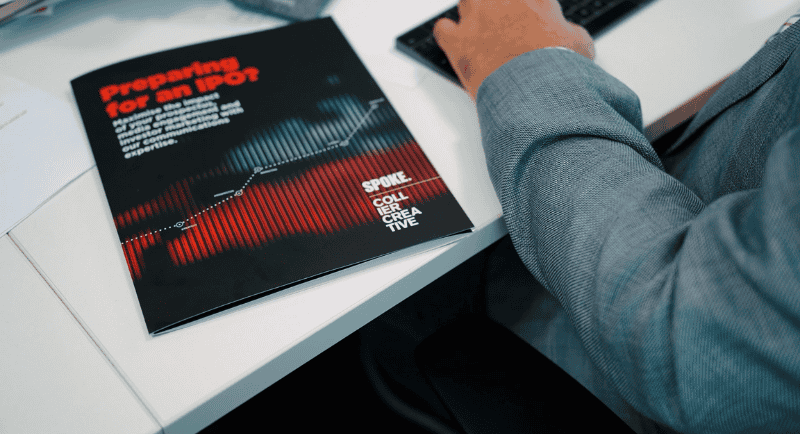
New partnership helps companies tell a compelling story before ASX listing
Australian Securities Exchange (ASX) has launched a new dedicated service to to help companies list through the partnership of SPOKE and Collier Creative.
The partnership aims to increase media exposure and investor interest during the Initial Public Offering (IPO) stage of ASX listings, utilising the agencies expertise in media, investor relations, and branding.
SPOKE Managing Director Luke Derbyshire said the new service follows recent changes by the Australian Securities and Investments Commission (ASIC) that speed up the IPO process.
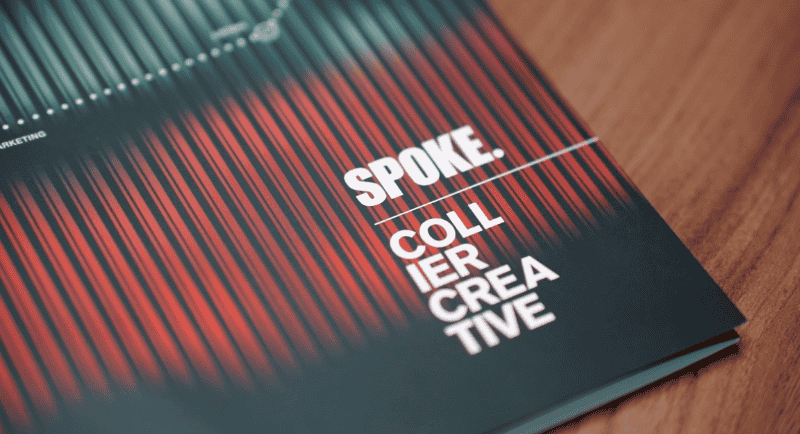
Luke Derbyshire: ‘The IPO phase is high stakes for any company preparing to list, which is why getting the story and branding right before trying to raise capital is absolutely vital.’
“It’s widely anticipated that ASIC’s new measures to expedite listing timelines for ASX hopefuls will encourage more companies to join the bourse,” Derbyshire said.
“The IPO phase is high stakes for any company preparing to list, which is why getting the story and branding right before trying to raise capital is absolutely vital.
“Before the formal process begins, companies need to capture investor attention with a compelling story and clear point of difference – that’s where SPOKE and Collier Creative deliver real outcomes.
“As the listing process becomes faster and more efficient, now is the time for Company leaders to engage communications experts to maximise their IPO journey and deliver the right message, to the right investors, at the right time, with impact and precision.”
Derbyshire added SPOKE and Collier Creative have strong experience delivering successful IPOs, supported by skilled teams and wide networks of investors, capital market professionals, and journalists.
“Our collaborative approach is designed to provide streamlined, end-to-end IPO service, helping companies navigate the complexities of publicly listing a company.”
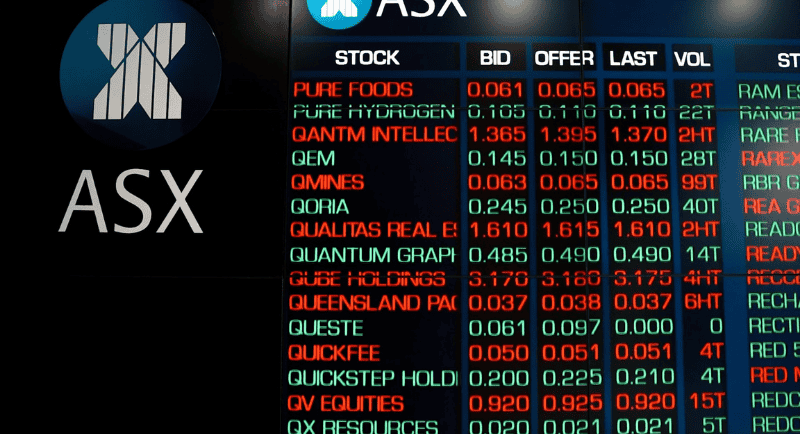
Kevin Imber: ‘As capital markets start to heat up, SPOKE and Collier Creative are ideally positioned to help the next wave of companies launch their IPO journey.’
Kevin Imber, Collier Creative Managing Partner, said the combined service offers strategic communication tools and tactics to attract investors and media.
“We deliver a suite of high-impact activity, including new or refreshed corporate branding, impactful prospectus design, captivating video content, and investor and media engagement,” Kevin said.
“With more than four decades of experience across Australian and international markets, our agencies have the knowledge and the know-how to execute listings with clarity and creativity.
“As capital markets start to heat up, SPOKE and Collier Creative are ideally positioned to help the next wave of companies launch their IPO journey.”
SPOKE and Collier Creative have broad experience across many industries, helping companies prepare for the public market and their ASX debut.
SPOKE, based in Australia, has offices in Perth and London, working with clients in finance, capital markets, technology, resources, energy, and property.
Collier Creative, based in Melbourne, is well known for building brands and creating stories and designs for investors, customers, and employees.
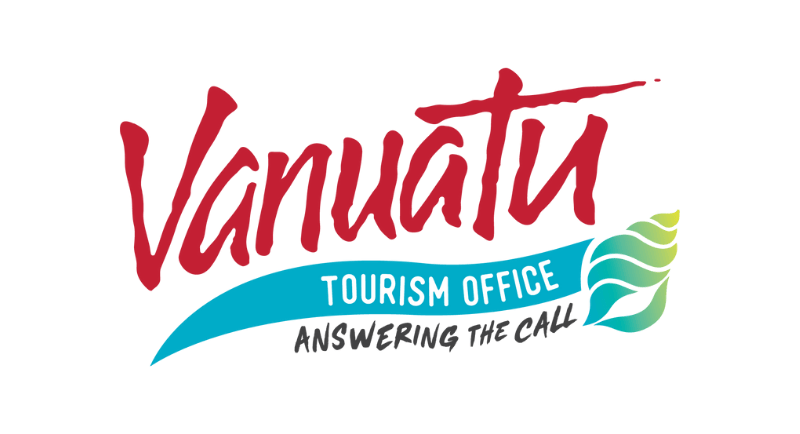
‘Adventure Passes’ campaign reminds us the spirit of Vanuatu remains strong
The Vanuatu Tourism Office has launched ‘Adventure Passes’ in Australia to promote Vanuatu as the top place for adventure, nature, and cultural experiences.
The campaign, developed with Sydney creative agency Apparent, will appear on digital display, video, audio, and social media, with each ad leads to Vanuatu’s travel deal website that offers travellers special offers.
‘Adventure Passes’ is an extension of the ‘Answer the Call of Vanuatu’ brand platform aims to increase interest and bookings through late 2025 and beyond, reminding travellers that Vanuatu’s spirit remains strong and is just a short three-hour flight from Australia’s East Coast.
The campaign takes the familiar look of a boarding pass and turns it into a ticket for adventure on one of Vanuatu’s 83 islands.
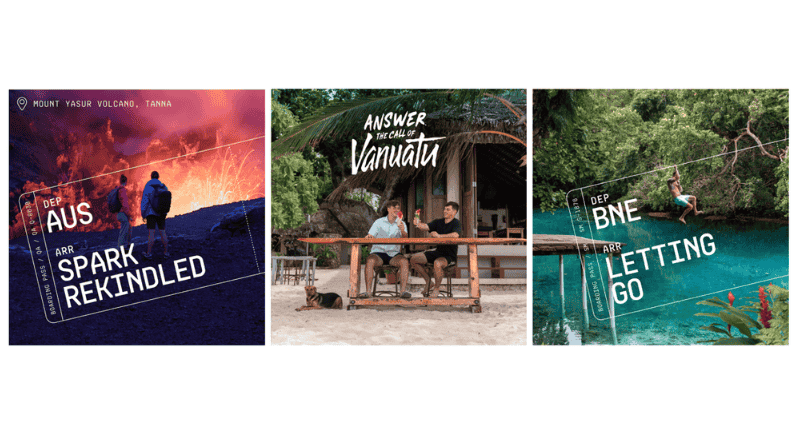
Suzy Smiley: ‘Adventure Passes brings to life the incredible diversity of experiences across Vanuatu in a way that’s engaging and accessible.’
Adela Issachar Aru, Vanuatu Tourism Office CEO, said the campaign offers an invitation for Australians to discover the adventure and experiences that make Vanuatu more than just a holiday.
“Following the earthquake in December 2024 we need to re-ignite interest in Vanuatu and confidence for Australians to visit.
“Vanuatu’s Adventure Passes campaign is a warm welkam, highlighting the countless adventures that can be had on our 83 islands, from snorkelling among our abundant marine life on Efate, spectacular nature on Espiritu Santo or a short flight and stay on Tanna, home to Mount Yasur, the world’s most accessible active volcano.”
“This campaign highlights both the memorable experiences that Vanuatu offers and the rich kastom and culture that resonates deeply with those who visit our shores.
“We have so many flights to Vanuatu, now is the time to book and come and see us. There are some amazing deals available right now.”
Suzy Smiley, Apparent Managing Director, said: “Adventure Passes brings to life the incredible diversity of experiences across Vanuatu in a way that’s engaging and accessible.
“We’re proud to support the Vanuatu Tourism Office in sharing these stories and helping more Australians discover just how close and special Vanuatu really is.”
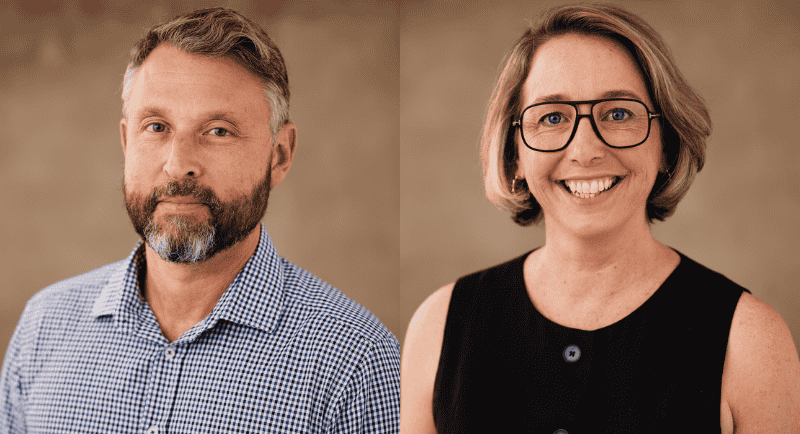
Meeting of the Minds: Alex Vishney and Melissa Gilson from 5D
This week’s Meeting of the Minds sees Alex Vishney and Melissa Gilson from 5D reveal their leadership heroes, current streaming binge, and career goals.
The Mediaweek series showcases diverse perspectives, thoughts and opinions by bringing together two different points of view from an industry rookie and an experienced expert.
Alex Vishney, Managing Director, Sydney, 5D
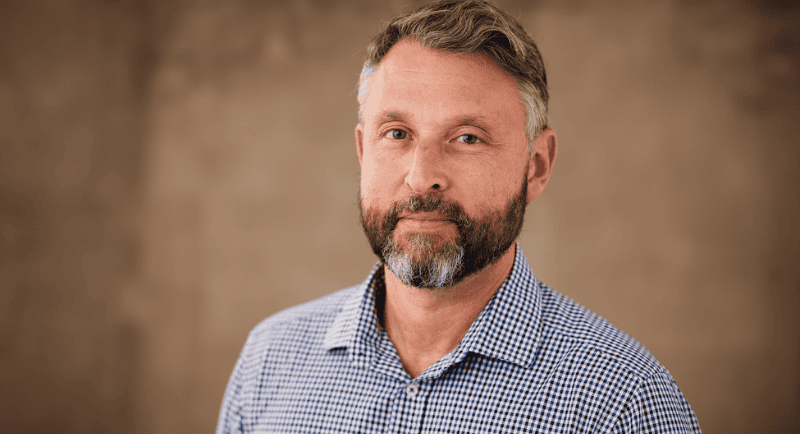
Favourite podcast/read: Currently Josh Szeps’ Uncomfortable Conversations.
Current streaming binge: Severance on Apple TV. For those who don’t know, it’s about dividing a person’s mind between a work persona and home persona and the two are completely oblivious to each other… which sounds quite appealing at first! But it then develops some interesting moral considerations.
Misconception about your role: That research is asking consumers what they think. In fact, humans are pretty bad at understanding what drives us, why we do things, and what we will do in the future.
So, to do my role well, you need a lot of experience in how to derive this sort of insight without relying on simply directly asking.
Best career advice: Always think two steps ahead.
Leadership hero: Warren Buffett. I’m an introvert and gravitate to similar personas. He has qualities that don’t tend to get mentioned nowadays in discussions about leadership: patience and consideration, rigor and fact-based decision making, substance over glitter, long-term value over short-term gains.
But when he decides to back something, he goes all in and doesn’t look back. He’s also a great storyteller and communicator.
How do you stay motivated: Zoom out a bit, look at the bigger picture, and remember I’m working with great people, helping businesses evolve and grow, and solving puzzles every day. Thankfully my job is quite varied and there’s always something interesting going on.
Best training course/session: Oxford Executive Leadership Program.
I wish someone had told me: To put more into my super in my 20s (well to be fair, lots of people did tell me that…)
Something that’s surprised you about the industry: The diversity of skills and capabilities needed to succeed. Specialist knowledge is just the beginning.
There’s research methods, marketing, strategy, psychology, statistics, etc. Then there’s a host of soft skills that take years to fine tune like communication, storytelling, presentation, consulting, business management, leadership, and it goes on.
What is your hot take on the industry: At its best, this industry lights the way forward for clients. But there is also a lot of mythology out there, with little basis in reality. The shift to science-based approaches has been happening but will accelerate in the coming years.
Favourite way to switch off from work: Central Otago Pinot Noir
Career goal for 2025: Learn something new each week.
Melissa Gilson, Director, Consumer and Brand Strategy, 5D

Favourite podcast/read: I literally could not be more of a cliché in that I love a good true crime podcast (as every self-respecting 40 something female does). Gilbert King’s Bone Valley remains my unbeatable favourite.
I also love a good memoir by “misbehaving” women. Loved and devoured The Many Lives of Mama Love, The Erratics and Educated – all so different, but equally entertaining.
I would read anything by Helen Garner. Anything. The woman could release a shopping list, and I’d devour it. She’s a genius.
Current streaming binge: MobLand is hard to beat. Directed by Guy Ritchie, starring Pierce Brosnan, a diabolical Helen Mirren, and Tom Hardy. Tom Hardy as a moody, mobland “fixer”, does it get better than this? Well, yes, watching Tom Hardy read bedtime stories with his bulldog is, *gulp*, good too.
Also loved Slow Horses, and very excited that another season is about to drop. Gary Oldman as a damaged, drunk, farting spy is just so, so good.
Misconception about your role: That anyone can do it! If I had a dollar for every person who casually scoffed, “pfft, I could run a focus group!”, well, I wouldn’t still be running focus groups!
Qualitative moderators are the ultimate multiskilled masters. This role requires so many skillsets, from the ability to make people feel immediately comfortable, to knowing when to ask a question, and when to remain quiet.
We must story-tell, explore, interrogate, double back, cross check, placate, encourage and gently pull a gaggle of voices back on course – all while being streamed online and observed through glass!
We are part psychologists, confidantes and nosey parkers. We often have one hour over cold pizza to find the answer. Easy, right?
The other misconception is that our role is simply to report what we hear. Lots of (shit) research certainly follows this premise, but true strategists look for meaning. We are more interested in the why than the what. The unsaid versus the verbalised. We have perfected the lost art of listening.
And that’s much more difficult to extract. It’s such a great job.
Best career advice: Find a great mentor but develop your own style. I’ve been blessed with so many amazing mentors, with such varying styles. It’s easy to want to replicate someone you admire, but it never feels quite right. Find what you are good at and play to that strength.
Leadership hero: I am loving the vocal horde of women’s health advocates who seem to be breaking through right now, on social media and beyond. They are giving voice to topics like endometriosis and menopause that have long been under the radar and under resourced for so long.
They are inspirational and working hard to reverse decades of damaging misinformation and neglect. They are making a difference to my life and my daughter’s life and giving a voice to my mother’s generation, who were gaslit and completely fucked over.
Unfortunately, however, it’s so much easier to point out terrible leaders than good ones right now.
How do you stay motivated: Through positive reinforcement. I like a good, sweet treat, expensive handbags, or five-star hotels! I am definitely more carrot than stick.
Honestly, I really enjoy what I do. Each new brief is an opportunity to dig in, find meaning and tell a story. It’s never boring, always challenging, and I work with awesome people. That’s motivation enough.
Oh, and the applause. I live for the applause.
Best training course/session: I’ve been working with my AI team to develop and refine qualitative research analysis frameworks over the past few months. It’s been incredibly enjoyable, I’ve learned so much, and I may be starting to earn my “AI Expert” nickname.
I wish someone had told me: To spend my drinking money in my 20s,on Sydney property.
That you need to be your biggest advocate. I read somewhere that we often talk to ourselves in a way we’d never speak to others. We can be so self-critical and mean. As I get older, I’m much kinder to myself, but I wish I’d learned earlier to be my biggest cheerleader.
Something that’s surprised you about the industry: Nothing, for a very long time! Then AI burst onto the scene and I’m more excited by my industry than I have been for some time.
The collaboration of human curiosity, critical thinking and machine learning is incredible, and it is changing the way I work, daily. It’s very exciting.
What is your hot take on the industry: Well, I’m constantly bemused and confused by these AI qualitative research tools that claim to get to the heart of what matters to people via “deep” conversations. My hot take is that we will continue to evolve AI and utilise it as the invaluable, exciting analytical tool it is, but it will never replace human to human conversations, immersion or observation when it comes to understanding, well, humans.
Favourite way to switch off from work: See above. True Crime, misbehaving women, Tom Hardy and red wine.
Career goal for 2025: To keep enjoying what I’m doing and to maintain this wonderful balance in my life. I’m having a pretty good time right now, so more of the same thanks.
–
To take part in future editions of Meeting of the Minds, please email: [email protected]
Past editions of Meeting of the Minds.
–
Top image: Alex Vishney and Melissa Gilson
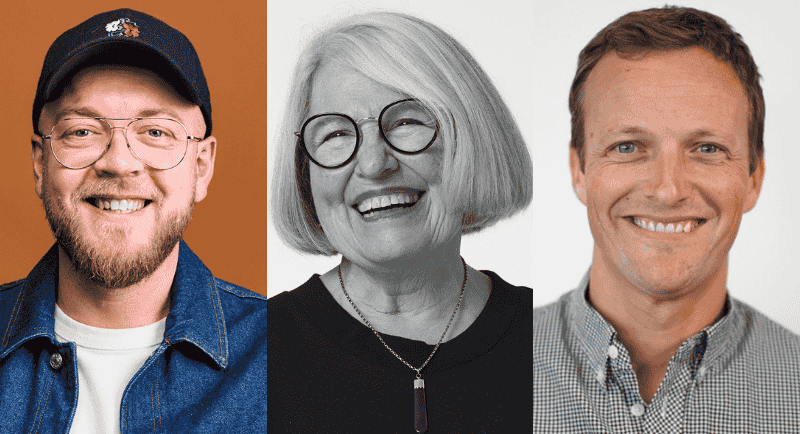
Balancing AI and human creativity: Industry leaders on the future of brand and content creation
The industry has been finding solutions to striking a balance between responsible AI use amid constant development with human creativity.
Tech labs and companies have developed sophisticated platforms that allow creators to make content they can only dream of in minutes, such as Midjourney and Google Veo 3. Meanwhile, developers and engineers have made solutions to ensure AI is used ethically and responsibly, including the Content Credentials and Meta’s efforts to label AI-generated content.
Australian marketers have been keen to adopt Generative AI tools, but only 8% have reached advanced maturity, leadership, planning, and deployment capability while 52% fall into the beginner category, with interest and few implementations or frameworks, according to The Australian Centre for AI in Marketing (ACAM) AI Readiness Benchmarking Report.
Mediaweek spoke to Houston Group’s Alex Creamer, Colleen Ryan from TRA, and Harry Preston of MBCS to examine the role of AI as a support tool in the creative process and its place in the future of the industry.

Alex Creamer: ‘AI may affirm, inform and support— but true originality that builds new relationships with new audiences, will still be a human endeavour.’
‘For some it’s terrifying, for others it’s tantalising’
Creative Director at Houston Group, Alex Creamer, said that AI has reshaped the industry in supporting craft, accelerating production, and replicating human creativity and interaction.
“For some it’s terrifying, for others it’s tantalising.”
He acknowledged that while AI has provided positives, such as democratising the creative industry, frictionless connections between customers and automating day-to-day work, it has the potential to damage the perceived value of creativity in both cost and skill.
Creamer noted that the future of brand and content creation is “likely somewhere in the middle.”
He said that when used ethically, Generative AI can offer new pathways of innovation and productivity often inaccessible to many and enable better work in the process.
“But the principles behind good brand building are the same – a unique POV and personality are essential, with a strong connection to people and place.
“AI may affirm, inform and support— but true originality that builds new relationships with new audiences, will still be a human endeavour,” he added.
For Colleen Ryan, Partner at insights agency TRA, human imagination born from personal and repeatedly reorganised mash-up of memory results in creativity.
“Sure, AI is ‘creative’, but it’s not idiosyncratic in the same way as human imagination. AI doesn’t dream or surprise itself. It might ‘hallucinate’ – but not in the same way as humans.
“Great brand work comes from embodied imaginative ideas, absurd and contrary juxtapositions that only an imaginative human mind could stitch together.
“Creativity is not just output generation, it’s imaginative synthesis, deeply tied to memory, subjective experience and embodied meaning – aka the human experience.”
Managing Director of MBCS, Harry Preston, said that while AI is powerful and influential, “it’s not visionary”.
“AI can help us with speed to market, better personalisation, and even provide a platform to ignite creativity – but it can’t replace gut feeling that tells you ‘This idea hits different’.
“The future of content isn’t man vs machine – it’s man with machine. AI should support creative ambition, not sterilise it.
“Brands who rely too heavily on AI risk producing homogenised content that gets lost. The bold ones will still come from people who know how to make culture, not just content.”
Using AI for good
Over-reliance on AI will have wide-ranging impacts on the industry, from creative to strategy, but Creamer highlighted “brain drain” as a lesser-discussed concerned.
“As a junior creative, I learnt so much from note-taking or sifting through competitor audits and books. If Otter or ChatGPT had been in my life then, I surely wouldn’t have had the same learning experience, or perhaps I’m just getting old.”
“Optimistically, this could lead to people developing new skills with more time to focus on innovation and creative thinking. Pessimistically, there’s a risk we cut junior roles in favour of efficiency at the top. Losing touch with new emerging demographics and ideas.”
Creamer pointed to Howatson & Co’s EXHIBIT A-I work for law firm Maurice Blackburn as a successful early work of text-to-image generation and helped tell the stories of those who can’t.
He also highlighted Publicis Groupe agency Marcel’s Les Bleues’ Highlights and how it used deepfake tech to shift the perception of women’s football.
“Brilliant human-centred ideas that used AI for good,” he added.
Colleen Ryan: ‘This means the jury is still out on the promise of AI as a tool for helping customers, whether that is customer experience, better engagement, innovation or advantages in pricing.’
Transparency and owning the narrative
Can brands use AI ethically and transparently developed connection with customers? Ryan cited TRA research on Australian and New Zealand attitudes and values toward progress.
96% of people said honesty was the most important thing brands can do to help people make progress. But while people believe that AI helps companies make progress, they don’t think it helps customers as much. The report noted 13% disagreed that AI mainly benefits businesses, not consumers.
“This means the jury is still out on the promise of AI as a tool for helping customers, whether that is customer experience, better engagement, innovation or advantages in pricing,” Ryan said.
She noted that a third believe AI will help brands understand customers and help people engage with them better, while another third disagree, and the rest are undecided.
“Transparency and owning the narrative is key for brands to address this, by authentically demonstrating the value they’re passing on because of the advantages AI is giving companies.”
‘Great brand storytelling comes from truth, bravery, and a point of view’
Can brands strike a balance AI AI-generated content and authentic brand storytelling? Preston noted that automation is great at speeding up processes and streamlining mundane tasks, but can impact originality.
“People can quickly tell if a brand is being inauthentic. You can’t A/B test your way to a story that moves someone. Great brand storytelling comes from truth, bravery, and a point of view.
He noted that a brand voice needs to stand for something. Preston said: “Marketers who get this right will use automation for the everyday and save the real creativity for the moments that matter the most.”
With growing AI adoption, Preston urged brands not to chase efficiencies. He explained: “AI should serve the idea, not the other way round. The moment you let automation lead creative decisions, you risk slipping into a sea of sameness.”
He noted that brands should protect their tone of voice and creative DNA and use AI where it makes sense, such as automation and accelerating processes.
“Always ask yourself, ‘Is this making us bolder, or just quicker?’ Guardrails matter. So does taste. And while AI can do a lot, it can’t tell you when something’s iconic. That’s still a human job.”
Preston added that from an ethical perspective, transparency with colleagues, clients, and partners on how AI is used is necessary.
“Human care needs to remain in ensuring brand identity is protected, and we must avoid using AI models trained on copyrighted material to ensure original and legally compliant content.
“It’s also critical that any AI-generated content is monitored for bias. It must support fairness and inclusivity that reflects the diversity of a brand’s audience.”

Harry Preston: ‘AI should serve the idea, not the other way round. The moment you let automation lead creative decisions, you risk slipping into a sea of sameness.’
Skilling up and shaping the future with AI
For all three, the future of marketing and AI is intertwined with creativity and productivity.
Ryan believes the future of AI will be in augmented imagination and using AI “as a tool to extend, not replace, our imagination and emotional nuances.”
“The human brain is only high performing in short periods, a couple of hours, for example. When we need to take a walk or whatever, our choice of defocussing is to replenish and enrich our inner life, our source of imagination.
“We might unconsciously or consciously see a beautiful and delicate butterfly juxtaposed against something harsh, triggering a memory or metaphor for an experience. In turn, this creates a unique emotional pulse.
Ryan explained that while creatives embody human experiences in short bursts of intense creativity, AI can be used to augment their work to build on their imagination.
“The challenge for creatives is in how this is executed – how can we avoid using AI for what we uniquely contribute as humans? Instead, how can we use it to feed, enhance and execute the outputs of our human imagination?”
Creamer’s outlook is “complex”. He said that AI aids the beginning stages of the creative process, such as research and planning, and automated end-of-project tasks.
But he noted that AI used from end-to-end can lack distinction and provenance in production and craft.
“Good brands make connections with their audience. The deeper meaning, craft and care in execution matters.
“The success of one-shot Netflix drama Adolescence isn’t just the acting, but in the way it was painstakingly planned and made. And Telstra’s ‘beautiful internet’ means very little if the dominoes didn’t actually fall.”
“If we use AI with integrity and to better innovation within the industry, we’ll find a balance that maximises and gives space to human-centred creativity.
“If we see it purely as a tool for efficiency and cost cutting, then our industry will look decisively different, more compact, and perhaps less original in the years to come.”
For Preston, marketers ned to watch out for falling down “the path of least resistance or become lazy.”
“With the huge pressure on marketing teams to do ‘more for less’, there’ll be a temptation to use AI and automate everything, but that’s an express path to getting lost in an already content-polluted world.”
He said the other risk is procurement finding AI-driven efficiencies and resulting in lesser investment, but believes brands who use AI wisely to free up time and money for bigger thinking will have stronger futures.
“Scale the basics and go harder on taking creative risks that earn attention in the lack of attention economy. That’s the work that people have cared about and always will care about the most. AI or no AI.”
Top image: Alex Creamer, Colleen Ryan, Harry Preston
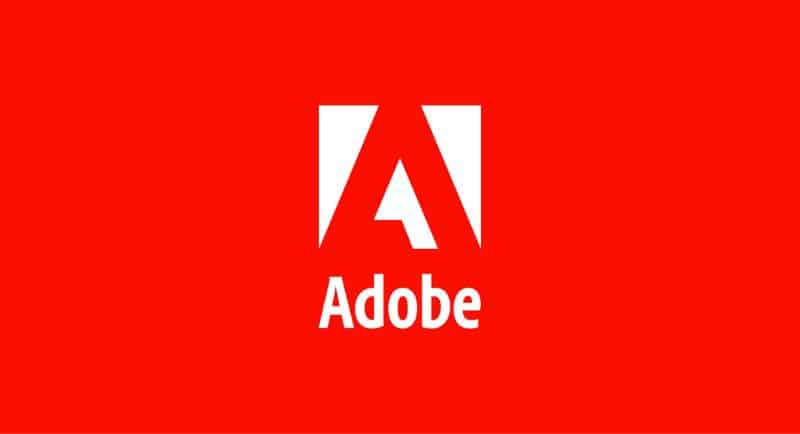
Adobe report shows agentic AI adoption surges 50% in just three months
Australians are rapidly shifting from using basic AI assistants to more advanced agentic AI tools, according to new research from Adobe. The dual-wave study, conducted in March and June 2025, found that agentic AI usage rose 50% in just three months, with 18% of Australians now using these tools and 42% expecting to do so within a year.
Agentic AI refers to systems that can interpret intent, make decisions, and act autonomously, unlike traditional assistants that respond only to direct prompts. Millennials are the frontrunners in this adoption curve, with 23% already using agentic AI, up from 13% in March.
AI goes mainstream for everyday tasks
The survey of over 1,000 Australians found that one in three are now regular users of AI assistants like ChatGPT, Gemini and Copilot, up 7% since March. Adoption is highest among Millennials (41%) and Gen Z (42%).
Respondents are increasingly turning to AI for:
• Shopping: 30% have used AI assistants to shop online, with 49% of Millennials planning to do so this year.
• Travel: 29% use AI for planning and bookings, with 87% reporting improved experiences.
• Finance: 23% use AI for personal banking and budgeting tasks.
• Creative work: 57% have used AI for writing, design, and multimedia tasks.
Agentic AI fuels new consumer behaviours
The Adobe report, titled From Assistants to Agents: The AI Evolution in Australia, found Australians are drawn to agentic AI’s capacity for convenience and personalisation. The most appealing features include:
• Comparing products and recommending based on preferences (63%)
• Finding deals and completing purchases (57%)
• Suggesting creative ideas tailored to user style (55%)
These tools are also reshaping digital habits. Almost four in ten Australians now use AI instead of traditional search engines, while 75% say assistants help them complete tasks more efficiently.
Brands must prepare for AI-first experiences
Katrina Troughton, Vice President and Managing Director, Australia and New Zealand at Adobe, said brands need to rethink digital engagement in an AI-powered world. “The surge in agentic AI adoption indicates that it’s no longer just about getting smart answers; people want AI that can act and make decisions,” Troughton said.
Adobe is integrating agentic AI into its products, including AI Assistant in Acrobat and a new Actions panel in Photoshop. Adobe’s forthcoming Brand Concierge aims to help businesses guide customers from exploration to purchase through conversational, context-aware agents.
The research underscores a significant opportunity for brands to deliver more tailored and proactive experiences, while balancing AI automation with the human support consumers still value.
Adobe surveyed over 1,000 Australians across two waves in March and June 2025 to produce the report.
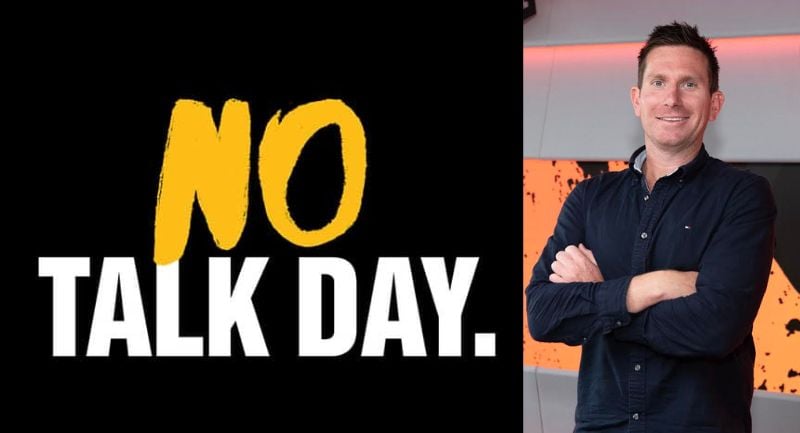
Why Triple M is turning off the mics for 12 hours on Monday
Triple M will switch off the mics across its entire network from 6am to 6pm on Monday 7 July for its seventh annual No Talk Day, a campaign designed to create space for Australians to check in on their mental health and each other.
All programming, including shows, news, traffic and advertising, will pause across 49 stations nationally and on the LiSTNR app. Instead, listeners will hear a curated selection of music, messages from listeners, mental health professionals, and some of Triple M’s most recognisable talent reflecting on their own experiences.
The initiative, run in partnership with Lifeline, targets a sobering reality: an average of 8.8 Australians die by suicide every day, with three in four being men. For a brand with a predominantly male audience aged 25 to 54, the cause is personal and persistent.
Mediaweek sat down with Head of Triple M Metro Content Matthew O’Reilly to talk about the initiative.
No shows. No ads. Just space to reflect
Speaking with Mediaweek, O’Reilly said the idea began in Melbourne seven years ago, driven by Mike Fitzpatrick and Shaun Gough, after the team encountered the statistic that six men a day were taking their own lives.
“As a brand that speaks largely to males, 25-55, that was a cause that we thought we needed to support.” O’Reilly said. “We landed on the idea of – if men could have a forum to talk, that would be a great thing. We decided to create the space and run the day.”
Now in its seventh year, the concept has evolved but remains simple: remove the regular noise of radio to make room for reflection, action and conversation.
“There is a little bit of messaging on the day because it would be a miss to just run nothing, but there are no shows, ads, news, traffic. Just music and moments that support the message,” he added.
Carefully curated audio, powerful personal stories
The day’s programming will feature a mix of listener testimonials, messages from Lifeline professionals, and artist stories from the likes of Jimmy Barnes and Bruce Springsteen, woven into the music.
“We’ll run a mixture of some great listener testimonials of people who say that No Talk Day actually saved their life.” O’Reilly said. “It was the instigator for them making change or reaching out to a friend or getting professional help.”
“Lifeline are a partner in the day, so there are some messages from professionals in this space that we run.”
Triple M’s local talent will also share reflections in pre-recorded segments, alongside carefully selected songs aired back-to-back, often without even the usual station IDs.
Why radio hits differently
O’Reilly believes the unique connection between radio hosts and their communities makes the platform especially powerful for mental health messaging.
“For a brand like Triple M, we’re such an irreverent, larrikin, take the piss brand, that when we do something serious like this, it’s a very different tone to 364 other days.” he said. “I think people take notice of that. When you hear people you idolise talking about their own struggles, it really normalises it, makes it easier for people to reach out and start a conversation.”
Operational lift and cultural alignment
Running 49 stations silent across different markets isn’t simple, but O’Reilly said the day is now a well-oiled machine. “Credit to the organisation, we get no pushback from sales, in terms of not running a commercial for the day. It feels like one of those movements the entire business is behind.”
While the campaign falls outside the capital city radio ratings period, O’Reilly says that’s more a logistical consequence than a deliberate choice. “Aligning 49 markets, and needs of all those markets, local events, you are left with very few options to get that day in.”
Promotional efforts ramp up the week before, while the breakfast shows are still on, and including in AFL and NRL coverage.
The messaging is updated annually to reflect current mental health guidance, and the team works closely with Lifeline on framing and tone. Previous years have included symbolic gestures, like six seconds of silence every hour.
“They’re not alone”
Asked what one takeaway he’d want listeners to have, O’Reilly didn’t hesitate: “What I would love is that someone who is struggling, hears the messaging, reaches out to a friend, gets themselves the help they need.”
“They’re not alone.”
Triple M’s No Talk Day airs nationally and on LiSTNR from 6am–6pm Monday 7 July.
For support, contact Lifeline on 13 11 14.

Stan sets premiere date for new original thriller series The Assassin
Stan has confirmed that its latest Original series, The Assassin, will premiere on July 25, headlined by Keeley Hawes and Freddie Highmore.
The six-part crime thriller reunites Hawes (Scoop, Bodyguard) and Highmore (The Good Doctor, Bates Motel) as a mother and son forced to confront a violent past. Set across scenic European locations, the series follows retired assassin Julie and her estranged son Edward as they flee a Greek island after her history resurfaces, triggering a globe-trotting chase that tests their fractured relationship.
Created and written by Harry and Jack Williams, the team behind The Tourist and Boat Story, the show is produced by Two Brothers Pictures, an All3Media company. Direction is split between Lisa Mulcahy (The Tourist) and Daniel Nettheim (Critical Incident).
The ensemble cast includes Shalom Brune-Franklin (The Tourist), Devon Terrell (Totally Completely Fine), Alan Dale, Gina Gershon, Jack Davenport, Gerald Kyd, Richard Dormer and David Dencik.
Hawes and Highmore both serve as executive producers, alongside Sarah Hammond, Daisy Mount, Alex Mercer, Krissie Ducker, Hamish Wright, and Selina Lim. The series is produced by Nige Watson, with casting by Kelly Valentine Hendry and Jessica Mescall.
Stan executives Cailah Scobie and Amanda Duthie also serve as EPs, with support from production partners Prime Video, All3Media International, and ZDF.
The Assassin premieres exclusively on Stan from July 25.
Top image: Freddie Highmore and Keeley Hawes
Television
Tech
REA offshores tech team jobs
Mark Di Stefano at The Australian quotes an REA spokesperson who says that the proposals included “promotion opportunities” and “redeployment to new roles,” which means that “less than four per cent” would be made redundant.
Cutting Edge enters liquidation
Sean Slatter from if reports that the move is less than a year after being announced as one of the first recipients of the Queensland Government’s $5 million Capital Grants program.
Cinema exhibition
Hoyts expands vibrating seat cinemas
Kaleah Salmon reports at Future Five that the new seats will be installed at eight new locations as well as existing sites, bringing the total number of D-BOX-equipped auditoriums to 44 over the next 12 months, representing a 70% increase in motion recliners across HOYTS cinemas.
To Top



